
Technology
22:54, 20-Mar-2019
Can AI robots beat humans at physical sports in 2019?
By Gong Zhe
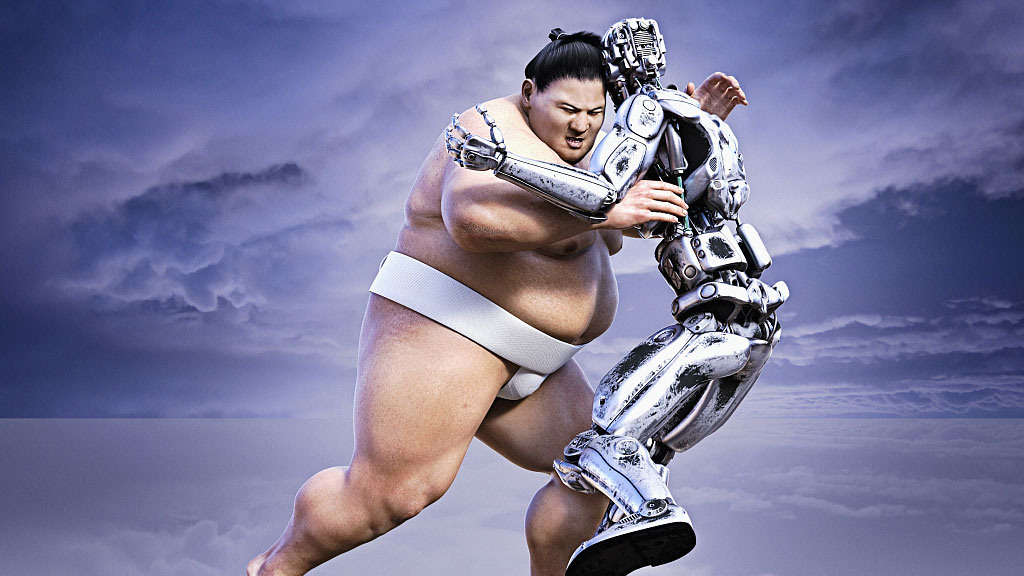
AI robots have beaten humans in intellectual games like chess and Go (known as weiqi in China), as we have witnessed the performance of Deep Blue and AlphaGo.
But what about physical sports? Can a robot run faster, jump higher or play football better than humans in a non-virtual field?
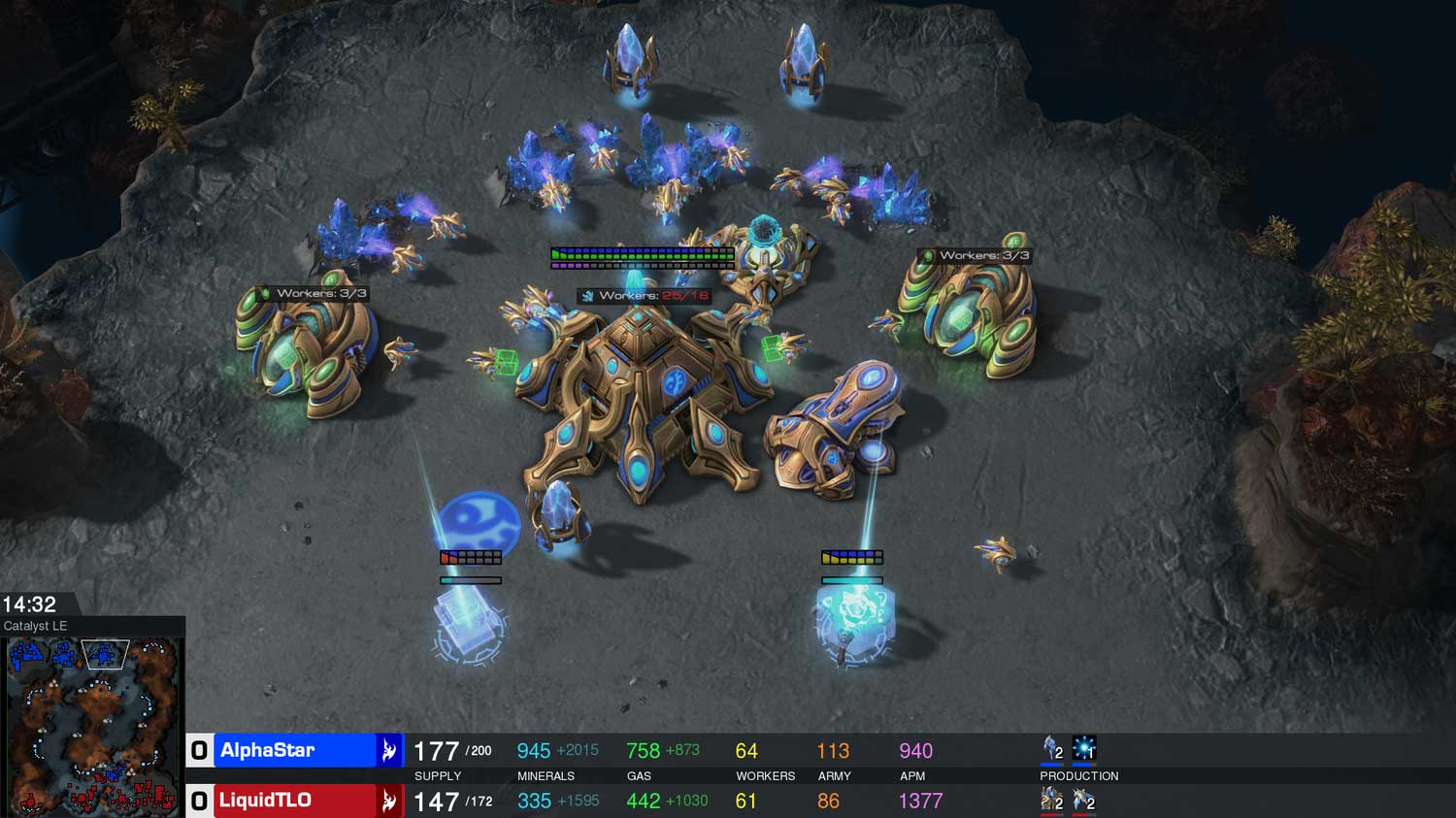
AlphaGo has moved on to play video games. /Screenshot from DeepMind
AlphaGo has moved on to play video games. /Screenshot from DeepMind
The short answer is no.
First we need to make clear what a robot is. In a broad sense, a car can be considered a robot, which obviously can run much faster than humans. A hydraulic pump can unleash strength that is unbelievable by many.
But if you insist on a robot that looks similar to humans, you start to notice how well we were built to do physical activities.
Electrically powered devices are very limited compared to human bones and muscles. Most robots have metal bodies which are not very flexible. Most human-like robots are much heavier than real people, making them hard to move fast.
And when it comes to team competition, the algorithm-based electric bodies will find a hard time to cooperate with each other. Though WiFi seems to be faster way to communicate, the content they can convey is limited for now.
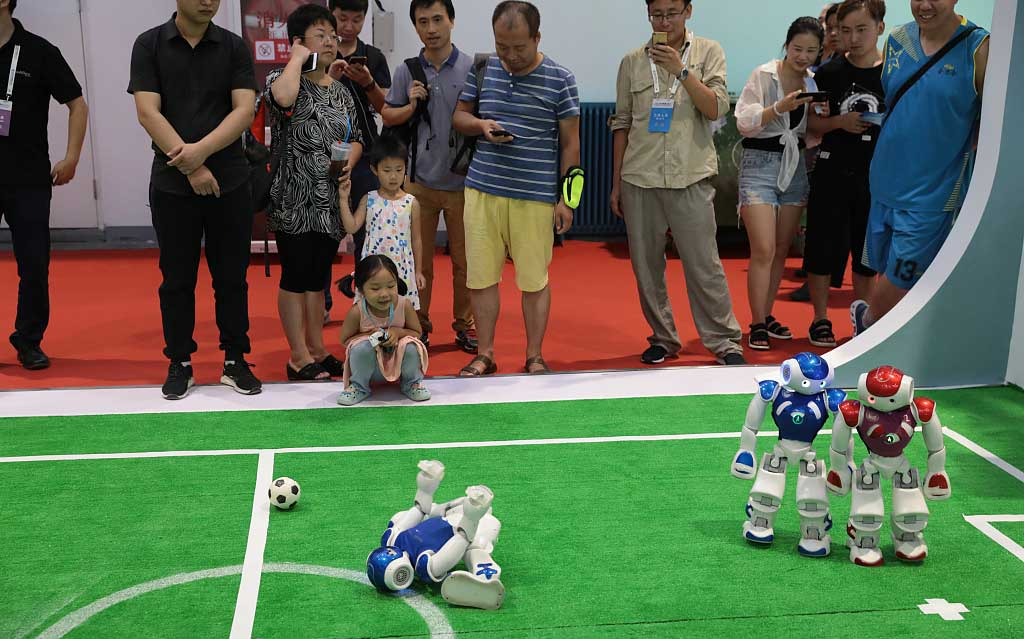
People watch robots playing soccer in Beijing, August 15, 2018. /VCG Photo
People watch robots playing soccer in Beijing, August 15, 2018. /VCG Photo
Let's take some examples.
You may have seen a lot of robots that look vividly like a real human. Sophia the robot has even got citizenship from Saudi Arabia. She made a lot of public speeches that were well written.
But you can't see her legs when she made those speeches. Because her walking style is so sluggish that her allure would disappear.
And sometimes, she didn't even carry her legs.
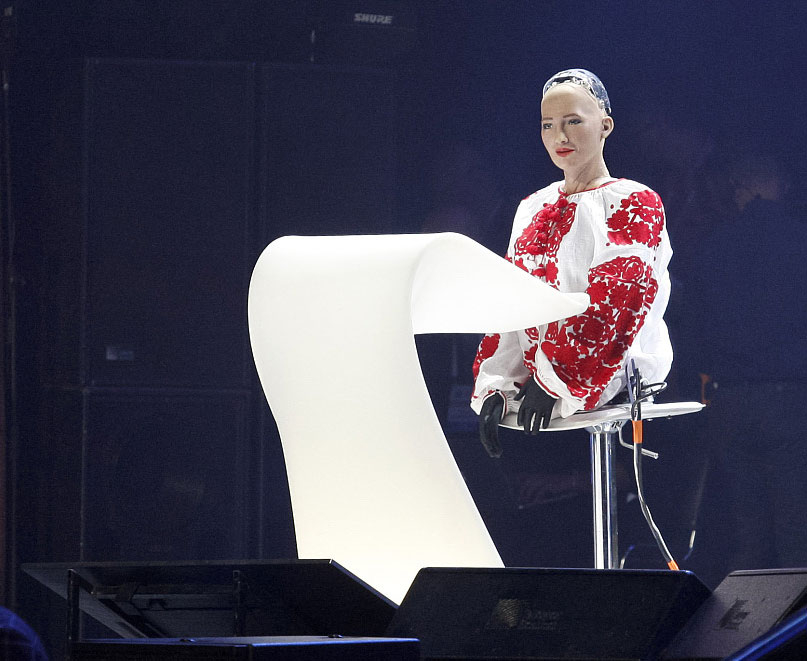
Sophia speaks without legs in Kiev, Ukraine, October 13, 2018. /VCG Photo
Sophia speaks without legs in Kiev, Ukraine, October 13, 2018. /VCG Photo
The Atlas from Boston Dynamics, marketed as "the world's most dynamic humanoid," can do some amazing backflips. But it's still catching up to real humans on weight-lifting, running and more complex moves required in physical sports.
The company also created some really swift robots. But they usually run on four legs like animals. Some animals are fast. That's common sense.
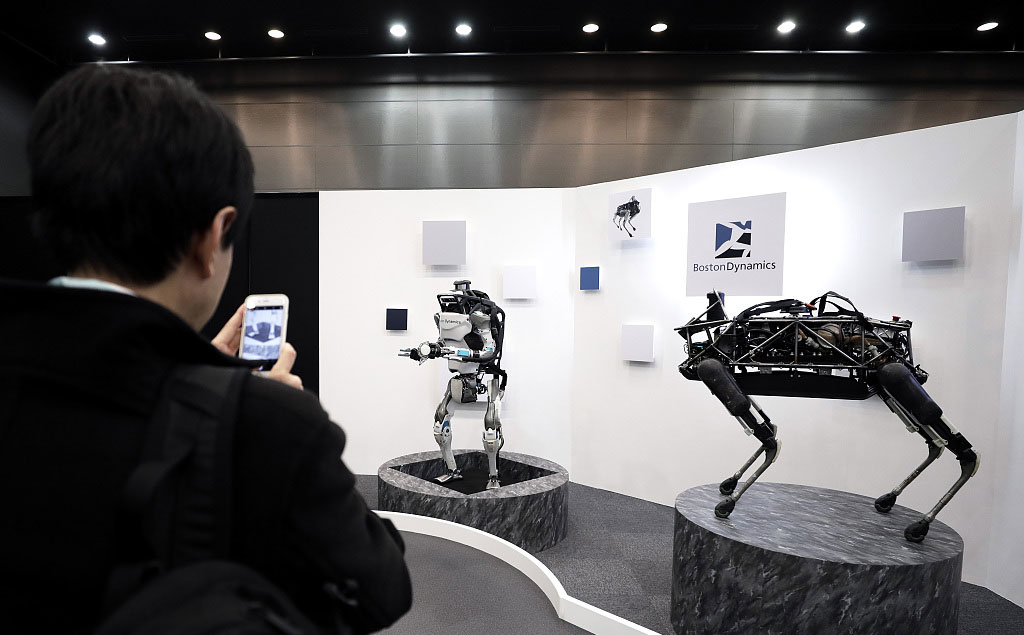
Two robots from Boston Dynamics, showcased in Tokyo, Japan, November 21, 2017. /VCG Photo
Two robots from Boston Dynamics, showcased in Tokyo, Japan, November 21, 2017. /VCG Photo
We at CGTN have also invited Liu Yushu, an AI researcher at Renmin University of China to talk about the future of robots. He said the robots are catching up fast on physical abilities. Check here for his opinions.
In a few days, this year's Boao Forum for Asia will be held in south China's Hainan Province, with a major topic involving the AI development. Stay tuned to CGTN for the latest insights.
(Top picture credit: VCG)

SITEMAP
Copyright © 2018 CGTN. Beijing ICP prepared NO.16065310-3
Copyright © 2018 CGTN. Beijing ICP prepared NO.16065310-3